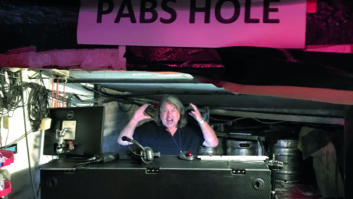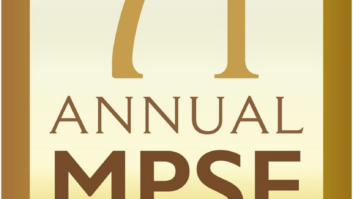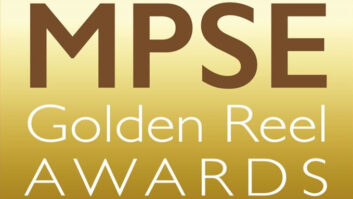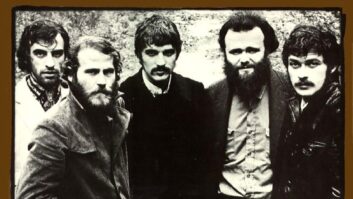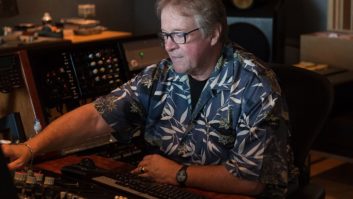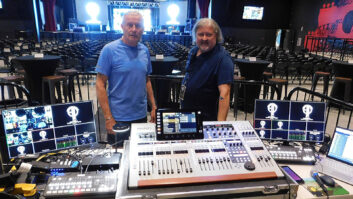Besides being one of the acknowledged greats of American pop songwriting, PAUL SIMON is also a master producer, arranger and recordmaker who has consistently made brilliant albums that are sonically interesting and beautifully crafted in every respect. You’re the One, Simon’s latest (released last fall and nominated for a Best Album Grammy), is a worthy addition to a nearly three-decade canon of solo works that is unrivaled among his generation of singers/songwriters.
Excepting Simon’s highly underrated album of songs for the ill-fated Broadway musical The Capeman, this is his first studio album since Rhythm of the Saints came out 10 years ago. On the first couple of passes, You’re the One might not grab the listener the same way as the more up-tempo material on Rhythm and the unsurpassable Graceland. But it’s an album that insinuates itself subtly and reveals more and more with each listening. We expect flesh-and-blood characters and a certain scattershot impressionism from Simon, and on those fronts the album succeeds wonderfully. Few writers move with such fluid grace between fiction and what appears to be autobiography, or at the very least his own philosophical musings. Musically, there is no particular overriding ethnicity this time around; certainly the polyglot has African and Latin flavors sprinkled throughout, but by this point Simon’s oeuvre is so singular and identifiable, it transcends its influences and has become its own thing — an impressive feat for any songwriter.
Simon is well-known for his studio perfectionism; it’s part of his artistic personality, and it is a byproduct of working for so many years with the legendary engineer Roy Halee, who goes back to the late ’60s Simon & Garfunkel days. Halee is semiretired now, and for the past several years, Simon’s recordings have been in the very capable hands of Andy Smith, a one-time assistant for Halee who stepped up to become Simon’s primary engineer for the Capeman sessions in the mid-’90s. “I learned a lot from Roy,” Smith says. “I was already in studios before I started working with him, but he really molded me in the direction of the way he works.”
Simon’s studio of choice for many years has been The Hit Factory in Manhattan. Smith notes, “They take really good care of us, and they have everything we need.” You’re the One was recorded in Studio A and mixed in Studio 5, The Hit Factory’s Sony Oxford room. Though Studio A is equipped with a Neve VR, Smith only used the console for monitoring, choosing instead to record through various preamps directly to Pro Tools.
“We had the preamps out in the rooms with the musicians, a rack filled with them, and we had harnesses made that went straight from there to the digital converters, so there were short mic cables — as short as we could get away with to the mic pre’s — and then one run from there to the Apogee [AD-8000SE] converters,” Smith says. “We used all different kinds of preamps. The main solid-state mic pre’s we used were Martech MSS-10s; we found those to be the best out of everything we had. At times, we had up to eight of those going. We also used two different kinds of Avalon mic pre’s, including two M5s, and some Earthworks and some old Neve 1073s and Grace mic pre’s. Also, we were looking for a high-quality headphone amp, and [Grace] said they had finished a design but hadn’t started manufacturing it. They quickly put one together for us, and we used that for headphone monitoring for Paul’s vocals and for when we were mixing. It’s a really good-sounding headphone amp. For tube mic pre’s, we used ones by D.W. Fearn.”
The album was recorded sporadically over a two-year period. “For the most part, the songs would come together with Paul and his guitar and the drummers — Steve Gadd and [percussionists] Jamey Haddad and Steve Shehan,” Smith says. “It was almost like they’d go into the studio not knowing exactly what they were going to work on, so the album was constructed in the studio rather than coming in with demos. They would work on different rhythms, try out various things, experiment. Probably over half of Steve’s drum kit parts aren’t even using sticks; he’s using his hands on the snares and toms. There were songs where he taped handkerchiefs on his toms to make them even deader and less like a drum kit. And it gets to the point where you don’t know which is which; which is the standard drum kit and what the other percussion is. There are only a couple of songs where there’s an actual backbeat, where you hear a snare snapping. A lot of times Paul wouldn’t have lyrics, but he’d have a melody, and then he’d build from the foundation they came up with.”
Simon and Smith opted to record these drum/guitar sessions live in the medium-sized room, with Simon’s guitar (ranging from a Gurion acoustic to a Paul Simon model Martin to custom electrics by Flip Scipio) miked at an amp with either a Sennheiser 421, Shure SM7 or a Shure SM57, and the drums captured with a combination of close-mics and overheads.
“We were trying to get a natural sound of what was going on in the room rather than a slick studio sound,” Smith says. “Without having the drums being hit the regular way, it wouldn’t sound like studio drums anyway. We ended up using a lot of the overheads — that was the main sound of the drums — and a little fill from some close mics.”
Smith used a number of different mics as overheads, including B&K 4003s, Neumann TLM170s and Earthworks omnis, which he admits is a little different for live tracking. This approach limited their flexibility in altering the basic tracks somewhat, but Smith believes the trade-off was worth it: “We usually couldn’t do too much to the basic tracks because of the fact that they were all sitting in the room together and we were using one set of room mics. There were a couple of times we wanted to replace something later and we couldn’t, but we wanted that live sound and the feeling of interaction between the three percussionists and Paul.
“Sometimes we’d be in there just getting levels and the musicians would get into a groove, and Paul would say, ‘Hey, that sounded good,’ and then we’d start working on constructing something out of this 10- or 12-minute piece — maybe add a top and an ending, do some editing. ‘Pigs, Sheep and Wolves’ fell together like that.”
Atypically, the bass lines, by Bakithi Kumalo (Simon’s regular bassist since Graceland) and studio ace Abraham Laboriel were added secondarily. “In a sense,” Smith says, “the percussion would supply the bass line, which made it difficult for the bass players because there were certainly low drums that were implying bass parts. But that also gave the bassists the opportunity to play in different ranges and to play in weird syncopations. There are some tracks where, if you solo the bass part, you’re surprised because there are notes that seem to be missing, but it’s because there are low drums that interweave with the bass line.”
On top of the basic unit of Simon, the drummers, Kumalo and nimble-fingered guitarist Vincent Nguini (in the band since Rhythm of the Saints), there are a number of other interesting and unusual instrumental additions and combinations that give the CD so much richness and depth. For instance, on the lovely opening track, “That’s Where I Belong,” the warm sonorities of a Wurlitzer piano, bass clarinet, bamboo flute, vielle and vihuela mingle effectively at the edges of the track to create an engaging sonic tapestry. On other songs, it’s a tasteful pedal steel guitar or harp or banjo or pump organ or hammer dulcimer or sitar guitar that add memorable touches. Simon loves to experiment in the studio and he loves combining textures to create new, natural sounds.
FOR THE MOST PART, THE SONGS WOULD COME TOGETHER WITH PAUL AND HIS GUITAR AND THE DRUMMERS. IT WAS ALMOST LIKE THEY’D GO INTO THE STUDIO NOT KNOWING EXACTLY WHAT THEY WERE GOING TO WORK ON, SO THE ALBUM WAS CONSTRUCTED IN THE STUDIO RATHER THAN COMING IN WITH DEMOS. — ANDY SMITH
“There are no synths or samples on the whole thing,” Smith says. “It wasn’t something we thought about in advance, but it turned out that way. Some of the guitar effects sound synth-like in places, but most of the atmospheric stuff comes from combining different sounds. Like in ‘The Teacher,’ Paul wanted to combine the pedal steel, the flute and the bass clarinet to get a synth sort of wash.” Still, one of the strongest tracks on the album is also perhaps the most straightforward: “Old” is a whimsical (and wise), two-minute slice of pure Buddy Holly-esque rock ’n’ roll, down to the spring reverb on the guitar. Smith says that most of the guitar effects on the CD were achieved using an Eventide DSP4500, Eventide Orville or TC FireworX. Other mics used on the project, in a variety of different applications, included B&K 4011s and 4006s, Neumann TLM50s and FET 47s, Sennheiser 421s and Shure SM98s.
The lyrics (and thus the final vocals) tended to be completed late in the recording process. Simon likes to experiment in this area, too, working with different phrasings and emphases. “The vocals aren’t heavily comped,” Smith notes. “He likes it to sound like a performance.” Simon’s vocal mic throughout the album was a Neumann M149. “Before this album, he switched around a lot. For instance, on the Capeman album, sometimes we’d have five mics set up if he was going to do vocal fixes because we chose different mics for different songs, but that was fitting because some of them were supposed to sound like old ’50s songs, and in general there was more variety to the sound we were going for, so we played around. But for this we stuck to the M149 through the Martech mic pre for the whole thing.”
When it came time to mix on the Oxford R3 (with GML software), the challenge, Smith says, was to keep it all clear because there is so much information. He cites “Look at That” as a tune that was particularly tricky to mix, “because the arrangement is so nontraditional and the ranges of the instruments are somewhat unusual. In the lower midrange, there’s very little because it has a high string guitar and the high pedal steel part, bamboo flute…
“We rotated through songs to stay fresh,” he continues. “We didn’t sit down for a day and mix a song. We’d spend an hour on a song then go to the next song, because on the Sony Oxford it recalls so perfectly and so quickly, as soon as you get a little bored, you go to the next song and then it seems like each time when you load it up again later you’ll hear something that sticks out, and you catch that first and then listen a couple of times, make some changes and then move on.” Smith mixed to a Genex GX-8500 24/96 hard disk recorder and monitored with KRK E7s and E8s. “We only used two reverbs on the album,” he notes, “the Lexicon 960 and the Sony DRE-777; a combination of those two units were the ambient room effects on everything.” Smith also used delays in the console.
Though, predictably, things got a little crazed near the end of the project as the fall 2000 deadline loomed. The CD was completed on schedule, and Simon celebrated its release by playing a series of concerts in small theaters in select cities around the U.S. and in Europe. In the concert setting, with Simon’s full band in perfect sync, the songs on You’re the One really came alive, and tunes like “That’s Where I Belong,” “Darling Lorraine,” “Old” and “Hurricane Eye” sat comfortably next to earlier Simon classics, many of which, as usual, had been thoughtfully rearranged to breathe new life into them. The tour is scheduled to hit the road again this spring and summer, and I can’t recommend the new show highly enough; it’s an amazing journey — a great night of music.
Also on the horizon for Simon is another noteworthy project: Three years after the ignominious end of The Capeman run on Broadway, the original cast album, which includes many songs not on Simon’s CD and features a talented group of singers, including current pop sensation Marc Anthony, is about to be released as a 40-song double-CD. The CD was cut at The Hit Factory (with Smith engineering) at the time the show was running but never came out. Simon rightly believes that the full score of the musical deserves to be heard.
So, there’s something old, something new and tributes aplenty for Simon, too: This month, he is being inducted into the Rock and Roll Hall of Fame for the second time (he’s already in as part of Simon & Garfunkel), and, in mid-February, he was honored as Person of the Year by the Grammy organization’s MusiCares foundation for his remarkable career and his extensive philanthropic work.
Blair Jackson is Mix’s executive editor.
